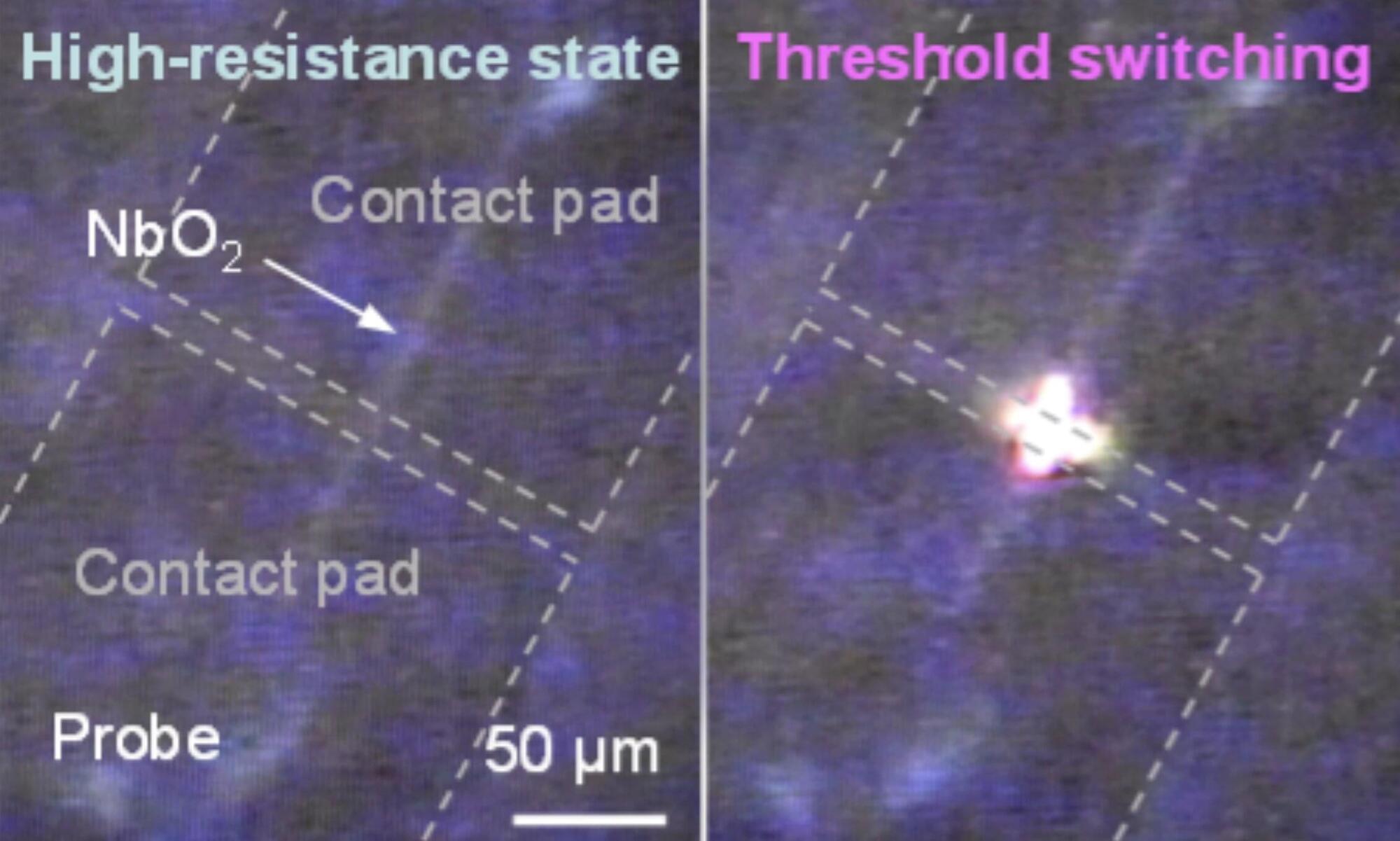Over the past decades, engineers have introduced a wide range of computing systems inspired by the human brain or designed to emulate some of its functions. These include devices that artificially reproduce the behavior of brain cells (e.g., neurons), by processing and transmitting signals in the form of electrical pulses.
Most neuron-inspired devices developed so far use either electrons or photons to process and transmit information, rather than integrating the two. This is because photonic and electronic systems typically have very different architectures, and converting the signals they rely on can be challenging and lead to energy losses.
Researchers at Stanford University, Sandia National Laboratories, and Purdue University recently developed new electro–optical devices that can mimic neuron-like electrical pulses and simultaneously emit oscillating light. These devices, referred to as electro-optical Mott neurons, were introduced in a paper published in Nature Electronics.
